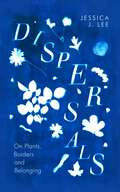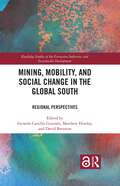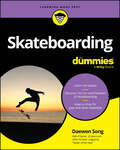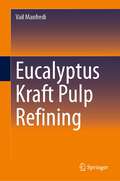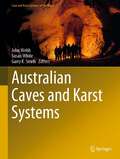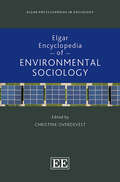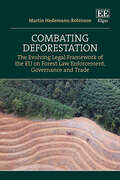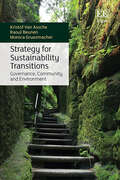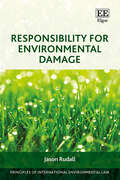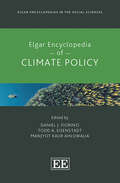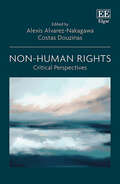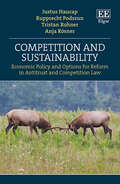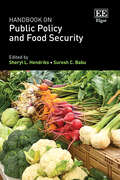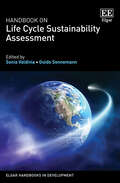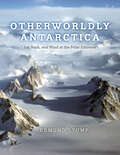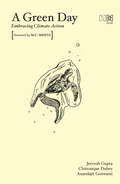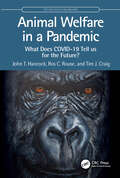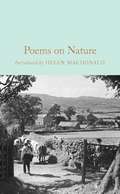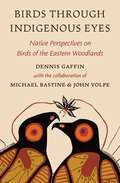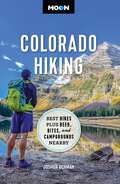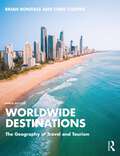- Table View
- List View
Dispersals: On Plants, Borders and Belonging
by Jessica J. Lee‘An invigorating cross-pollination of memoir and natural history, both beautifully phrased and delicately structured—this book deserves your time and attention’ Cal Flyn, author of Islands of Abandonment A poetic and intimate essay collection on the lives of plants and their entanglement with our human worldsA seed slips beyond a garden wall. A seaweed drifts through an ocean. A tree is planted on a shifting border. A shrub is uprooted from its culture and its land. What happens when these plants leave their original homes and put down roots elsewhere?Born in Canada to a Taiwanese mother and a Welsh father, steeped in both literary and scientific traditions, Jessica J. Lee is a perfectly placed observer of our world in motion.In this vibrant book of linked essays she explores the entanglements of the plant and human worlds, and the echoes and counterpoints she detects in the migration of plants and people - and the language we use to describe them.Each of the plants considered in this collection are somehow perceived as being "out of place"- whether weeds, samples collected through imperial science, or crops introduced and transformed by our hand.Combining memoir, history, and scientific research in precise and poetic prose, Jessica J. Lee meditates on the question of how both plants and people come to belong - or not - as they border cross, and reveals how all our futures are more entwined than we might imagine.'At once expansive and intimate, and most of all, gorgeously written. This is a book I will return to often over the course of my life’ Nina Mingya Powles, author of Small Bodies of Water
Mining, Mobility, and Social Change in the Global South: Regional Perspectives (Routledge Studies of the Extractive Industries and Sustainable Development)
by Gerardo Castillo Guzmán Matthew Himley David BreretonThis volume focuses on how, why, under what conditions, and with what effects people move across space in relation to mining, asking how a focus on spatial mobility can aid scholars and policymakers in understanding the complex relation between mining and social change. This collection centers the concept of mobility to address the diversity of mining-related population movements as well as the agency of people engaged in these movements. This volume opens by introducing both the historical context and conceptual tools for analyzing the mining-mobility nexus, followed by case study chapters focusing on three regions with significant histories of mineral extraction and where mining currently plays an important role in socio-economic life: the Andes, Central and West Africa, and Melanesia. Written by authors with expertise in diverse fields, including anthropology, development studies, geography, and history, case study chapters address areas of both large- and smallscale mining. They explore the historical-geographical factors shaping mining-related mobilities, the meanings people attach to these movements, and the relations between people’s mobility practices and the flows of other things put in motion by mining, including capital, ideas, technologies, and toxic contamination. The result is an important volume that provides fresh insights into the social geographies and spatial politics of extraction. This book will be of great interest to students and scholars of mining and the extractive industries, spatial politics and geography, mobility and migration, development, and the social and environmental dimensions of natural resources more generally.
Skateboarding For Dummies
by Daewon SongA beginner’s guide to skating for fun, fitness, and self-expression Skateboarding For Dummies teaches you the basics of the fun and popular sport of skateboarding, so you can start shredding. Author Daewon Song has been a pro skateboarder for 30 years and is considered to be the most technically gifted skateboarder of all time. He is passionate about the sport and shares his enthusiasm and experience in this easy-to-read guide. Skateboarding is a fun, challenging, and inclusive sport that can also be a powerful outlet for self-expression. With this book, you’ll learn cool tricks, safe skating, and skatepark etiquette. Plus, you’ll discover how skateboarding can bring positivity to your life, building your confidence and self-esteem. Shop for your first skateboard and essential accessories Learn the basics of riding a skateboard at a skatepark Get step-by-step instructions for performing classic tricks Discover the history of skateboardingSkateboarding is for everyone, regardless of age or background, and Skateboarding For Dummies is for anyone who wants to give this sport a try.
Eucalyptus Kraft Pulp Refining
by Vail ManfrediThis book presents a brief history of papermaking followed by comments regarding wood as a source of fibers, including its chemical and anatomical characteristics and the influence of these aspects on the quality of the pulp produced. In addition, the author describes the effects of the pulping process, mainly a chemical process, on pulp quality and how these wood characteristics influence both the refining process as the quality of the final paper. The book further provides a broad discussion, based on experimental results, on the contribution of the main operating refining variables and the main strategies that can be used industrially to optimize the operating results. From this evaluation, the parameter that complements the specific edge load theory is identified. This parameter is related to the retention time of the fiber flocs inside the refiner.
Australian Caves and Karst Systems (Cave and Karst Systems of the World)
by John Webb Susan White Garry K. SmithThis book, part of the series Cave and Karst Systems of the World, begins with a review of the interaction between people and caves in Australia (including conservation), followed by descriptions of the spectacular cave diving sites, before comprehensively covering all the major carbonate and noncarbonate karst areas, subdivided by rock type and region, and including the origin of the caves. This is followed by broad overviews of cave minerals and speleothems, cave biology and cave fossils. Each section was written by one or more specialists in the topic and is illustrated by clear diagrams and superb colour photos. The book emphasises the unique aspects of the Australian karst, including the variability in the age of the caves (very old to very young) and the impact of isolation on the stygofauna, as well as the vertebrate fossils preserved in the caves. Written in an easy-to-read style, the book is a primary reference guide to Australian karst and represents a valuable asset for anyone interested in the topic, not only cavers and academics.
Elgar Encyclopedia of Environmental Sociology (Elgar Encyclopedias in Sociology series)
The Elgar Encyclopedia of Environmental Sociology serves as a repository of insight on the complex interactions, challenges and potential solutions that characterize our shared ecological reality. Presenting innovative thinking on a comprehensive range of topics, expert scholars, researchers, and practitioners illuminate the nuances, complexities and diverse perspectives that define the continually evolving field of environmental sociology. Entries provide clear and concise explanations of complex concepts and theories on the relationship between material, ecological and social progress and barriers to progress, contributing to a wealth of thought-provoking research designed to encourage critical thinking and reflection. This authoritative Encyclopedia will serve as a comprehensive research tool for students, researchers and scholars of environmental sociology, environmental studies and sustainability studies. Key Features: 99 enlightening entries authored by an impressive collective of contributorsAn accessible and engaging format designed to cater to a wide audience of students, researchers and expertsTimely insights on contemporary issues and developments in the field of environmental sociology, from climate adaptation and degrowth to the carbon intensity of well-being and Rights of Nature
Combating Deforestation: The Evolving Legal Framework of the EU on Forest Law Enforcement, Governance and Trade
by Martin Hedemann-RobinsonIn this insightful book, Martin Hedemann-Robinson appraises the European Union’s development of its legal framework to assist in combating one of the foremost challenges facing the international community: global deforestation. He provides an analytical overview of the evolving Union legislation, discussing its impact both within the single market as well as internationally.The book meticulously assesses the evolution of EU policy intervention regarding global deforestation, which commenced with the Union's 2003 Forest Law Enforcement Governance and Trade Action Plan. Subsequent chapters discuss the development of voluntary partnership agreements forged with non-EU countries in tropical forested regions, as well as analyse the EU’s 2010 Timber Regulation designed to exclude illegal timber from being sold on the single market. Hedemann-Robinson then examines more recent and profound adjustments to the EU's policy framework, notably the 2023 Deforestation-Free Product Regulation (DFPR) which phases in a ban of certain imported agricultural produce associated with contributing to the problem of global deforestation. Finally, the book places these developments in a broader international context, considering the extent of political and legal co-operation across the globe.Comprehensive and precise, Combating Deforestation will prove an invaluable resource for students and scholars of law, geography, ecology and political science. It will also interest practitioners and policymakers involved in environmental protection, international public law and international trade.
Strategy for Sustainability Transitions: Governance, Community and Environment
by Kristof Van Assche Raoul Beunen Monica GruezmacherIn this innovative work, Kristof Van Assche, Raoul Beunen and Monica Gruezmacher analyse the challenges and possibilities of sustainability transitions, presenting the dilemmas facing the path to more sustainable communities and societies, as well as proposing creative solutions. The authors deploy evolutionary governance theory as a conceptual framing for transition strategy, highlighting the importance of understanding governance and community strategy in any potential response to environmental crises.This timely book expertly draws on a wide range of disciplines and theories, in considering the limitations imposed by unpredictable dynamics of power, discourse and affect and the shifting boundaries of what is governable. The authors demonstrate the creative potential of both instabilities and rigidities in governance. Chapters detail the basics of evolutionary governance theory, developing and applying it to transition strategy by engaging in an accessible manner with post-structuralism, psychoanalysis, institutional economics, systems theory and critical management studies. In a clearly constructed theoretical narrative, the results of this engagement become clear, in a new understanding of the weight of the past on governance and community, the construction of temporality, change and strategic change, contextual notions of good governance, and how these affect major shifts towards sustainability.Strategy for Sustainability Transitions is an important addition to an ever-expanding and crucial field. Particularly relevant to practitioners and policy makers interested in sustainable development and environmental governance, it will greatly appeal to students and scholars of human geography, public policy and administration, environmental politics and planning and development studies.
Responsibility for Environmental Damage (Principles of International Environmental Law series)
by Jason RudallEngaging with one of the most consequential issues of our time, this book provides a thoughtful analysis of responsibility for environmental damage under international law. It conceives of responsibility in a comprehensive way, tackling the legal responsibility, liability and accountability of state and non-state actors for harm they cause to the environment.Responsibility for Environmental Damage traverses the primary and secondary rules of international law, the responsibility, liability and accountability of states, international organizations, corporations and individuals, as well as existing, new and emerging regulatory frameworks. It engages with the consequences of environmental harm, appraising both orthodox legal doctrines and cutting-edge questions like shared responsibility, equitable considerations, full reparation, response measures under liability regimes, corporate responsibility, ecocide and responsibility for climate change, amongst many others. In doing so, the book evaluates whether the law is equipped to deal with the novel challenges that environmental damage presents and argues that new legal tools are needed to effectively tackle some of the most significant threats to our planet.This book is an essential resource for undergraduate and postgraduate students as well as scholars who conduct research on responsibility, liability or accountability for environmental damage in the areas of public international law, international environmental law, human rights, international criminal law and international economic law. International law practitioners, judges, arbitrators, policymakers, and those working for think-tanks and NGOs will similarly benefit from this valuable work.
Elgar Encyclopedia of Climate Policy (Elgar Encyclopedias in the Social Sciences series)
The Elgar Encyclopedia of Climate Policy provides a comprehensive and compelling account of the causes and potential solutions to one of the most pressing global challenges of the 21st century: climate change. With deep intellectual rigour, this Encyclopedia adeptly surveys the nature and application of various international climate change policies.Expertly analysing central topics such as carbon budgets and pricing, net-zero carbon, loss and damage, international trade policy, and digital climate solutions, contributors explore diverse policy approaches, policies, and technologies using case studies at both national and sub-national levels. Key concepts featured in climate debates, the roles of actors and institutions in problem-solving, the technology and policy solutions that are being used or should be considered, and the applications of proposed policies are all examined in an authoritative and pragmatic manner.This innovative Encyclopedia is an essential read for academics and students interested in politics and public policy, environmental studies, the sustainable development goals, law, and regulation and governance.Key Features:Accessible explanations of key concepts and debatesIn-depth coverage of case studies from across the globeOver 90 entries from international and interdisciplinary contributorsClearly organised into six thematic sections addressing theories and methods, evidence and impacts, concepts, actors, institutions and agreements, solutions, and case studies
Non-Human Rights: Critical Perspectives
Non-human rights are a reality today: this book unpacks their paradoxes as well as their significance for our historic crucible. As animals, rivers, mountains, rainforests, ecosystems, and synthetic entities such as machines, AI, and robots gain recognition as subjects of rights in different parts of the world, non-human rights become part of our ordinary legal landscape and vocabulary. This timely book provides a critical outlook on this rising trend at the crossroads of two of the main concerns of the 21st century: climate change and automation.In seeking to address the foundations, genealogies, philosophies, and impacts of non-human rights, the contributors to this volume examine both their potential and limitations. Are non-human rights just a mere extension of the liberal human rights discourse or, as some suggest, something else and new based on different principles? Are they a ‘revolution’ or just ‘more of the same’? Are they a practical solution that could ‘save us’ from climate disaster and self-destruction through automation or part of the problem and obstacle for social change?This book will be a vital resource for scholars and students of human rights, environmental law, animal rights, law and technology studies, legal theory, socio-legal studies, constitutional law and public international law. Providing an accessible overview of the changing patterns of the rights discourse in contemporary societies, it will also benefit anthropologists, climate and animal rights activists, political scientists, international relations scholars, policy makers and sociologists.
Competition and Sustainability: Economic Policy and Options for Reform in Antitrust and Competition Law
by Justus Haucap Anja Rösner Rupprecht Podszun Tristan RohnerCompetition and Sustainability critically examines how the market economy can be preserved without compromising the Sustainable Development Goals of the UN. Serving as a useful overview of the problems and solutions found in one of the most controversial issues in current antitrust doctrine, this topical book offers concrete policy options for EU competition law.How can concerns over climate change, the supply chain, or animal welfare be integrated into antitrust? What can competition agencies do to help transform the market economy to a more sustainable one? Renowned experts in competition economics, law and sustainability answer these questions, and in doing so dissect issues such as cartels, exemptions, monopolisation, the environmental, social, and governance transformation, and merger control. Problems with government intervention in markets, quantification, and the danger of greenwashing are confronted with a thorough examination of the options for policy reform.This indispensable book tackles the transformation to the sustainable market economy with competition at its core. It will prove useful to academics in the fields of competition and antitrust law, corporate law and governance, European law, environmental law, and political economy, as well as policymakers and practitioners working in legal and economic fields.
Handbook on Public Policy and Food Security
The Handbook on Public Policy and Food Security provides multi-disciplinary insights into food security analysis across the Sustainable Development Goals (SDGs). As food security is an essential outcome and a part of sustainable and healthy food systems, this Handbook addresses the urgent need to provide a comprehensive overview of the field’s current developments.Paired chapters focuses on a specific SDG in turn, presenting an overview and using qualitative and quantitative methodological approaches to assess the impact of food security on the attainment of the specific goal, and the evaluation of the impact of the goal on food security. This Handbook brings together experts in the field who advocate for a food systems approach, highlighting how various components of a food system function together to achieve the goal of food security for all. The cross-policy themes covered extend beyond the SDGs, proving relevant for public policy and food security in the foreseeable future. This erudite Handbook will be highly informative for academics, researchers and students in agricultural economics, development studies, human geography, human rights and comparative social policy. It will also be beneficial for professionals working in public policy, NGOs and multilateral organisations who are interested in understanding food security and nutrition monitoring.
Handbook on Life Cycle Sustainability Assessment (Elgar Handbooks in Development)
This Handbook presents the state-of-the-art of Life Cycle Sustainability Assessment (LCSA) practice and provides guidance for its implementation and outlook for future work. Spotlighting sustainability analysts, managers and overall decision-makers from private and public sectors as well as experts in academia, it covers the historical background and current global context for life cycle sustainability assessment, methods and data management advancements. Highlighting best practices on how LCSA is used for each of the sustainability pillars (environmental, economic, and social) from a life cycle perspective, the Handbook illustrates how results can then be integrated into the decision-making process. Its use of sectoral and policy cases also illustrates the feasibility of using these results when putting in place life cycle sustainability management. Chapters further investigate developments like responsible sourcing and the transition to a circular economy requiring consideration for expanding the uptake of LCSA by global markets, and low- and middle-income countries. The Handbook on Life Cycle Sustainability Assessment will be an excellent resource for academics and researchers who are interested in both social sciences and natural sciences and engineering. It will also be of great interest to business, professionals and policy makers who are interested in not only the environment but also in important social and economic considerations as we move towards a low carbon and more sustainable future economy.
Otherworldly Antarctica: Ice, Rock, and Wind at the Polar Extreme
by Edmund StumpWith stunning original photographs, an Antarctic scientist and explorer takes us to one of the most sublime, remote, and pristine regions on the planet. The interior of Antarctica is an utterly pristine wilderness, a desolate landscape of ice, wind, and rock; a landscape so unfamiliar as to seem of another world. This place has been known to only a handful of early explorers and the few scientists fortunate enough to have worked there. Edmund Stump is one of the lucky few. Having climbed, photographed, and studied more of the continent-spanning Transantarctic Mountains than any other person on Earth, this geologist, writer, and photographer is uniquely suited to share these alien sights. With stories of Stump’s forty years of journeys and science, Otherworldly Antarctica contains 130 original color photographs, complemented by watercolors and sketches by artist Marlene Hill Donnelly. Over three chapters—on the ice, the rock, and the wind—we meet snowy paths first followed during Antarctica’s Heroic Age, climb the central spire of the Organ Pipe Peaks, peer into the crater of the volcanic Mount Erebus, and traverse Liv Glacier on snowmobile, while avoiding fatal falls into the blue interiors of hidden crevasses. Along the way, we see the beauty of granite, marble, and ice-cored moraines, meltwater ponds, lenticular clouds, icebergs, and glaciers. Many of Stump’s breathtaking images are aerial shots taken from the planes and helicopters that brought him to the interior. More were shot from vantages gained by climbing the mountains he studied. Some were taken from the summits of peaks. Many are of places no one had set foot before—or has since. All seem both permanent and precarious, connecting this otherworld to our fragile own.
Otherworldly Antarctica: Ice, Rock, and Wind at the Polar Extreme
by Edmund StumpWith stunning original photographs, an Antarctic scientist and explorer takes us to one of the most sublime, remote, and pristine regions on the planet. The interior of Antarctica is an utterly pristine wilderness, a desolate landscape of ice, wind, and rock; a landscape so unfamiliar as to seem of another world. This place has been known to only a handful of early explorers and the few scientists fortunate enough to have worked there. Edmund Stump is one of the lucky few. Having climbed, photographed, and studied more of the continent-spanning Transantarctic Mountains than any other person on Earth, this geologist, writer, and photographer is uniquely suited to share these alien sights. With stories of Stump’s forty years of journeys and science, Otherworldly Antarctica contains 130 original color photographs, complemented by watercolors and sketches by artist Marlene Hill Donnelly. Over three chapters—on the ice, the rock, and the wind—we meet snowy paths first followed during Antarctica’s Heroic Age, climb the central spire of the Organ Pipe Peaks, peer into the crater of the volcanic Mount Erebus, and traverse Liv Glacier on snowmobile, while avoiding fatal falls into the blue interiors of hidden crevasses. Along the way, we see the beauty of granite, marble, and ice-cored moraines, meltwater ponds, lenticular clouds, icebergs, and glaciers. Many of Stump’s breathtaking images are aerial shots taken from the planes and helicopters that brought him to the interior. More were shot from vantages gained by climbing the mountains he studied. Some were taken from the summits of peaks. Many are of places no one had set foot before—or has since. All seem both permanent and precarious, connecting this otherworld to our fragile own.
A Green Day: Embracing Climate Action
by Jeevesh Gupta Chittranjan Dubey Anandajit GoswamiAn Engaging Compilation of Perspectives on Climate Activism The impassioned essays, noteworthy profiles and first-person narratives in this anthology champion grassroots and global environmental movements that have persuaded policymakers and mobilized communities to take note of the worsening state of the natural order. From the Global South to the Global North, change advocates and those experiencing the thick of the emergency revisit the tipping points in their activism journey, lay out harsh truths about the extent of damage caused and offer scalable solutions to combat the mounting crisis. Outlining their rage, despair, fears and hope for the future, the campaigners underscore that there may be reasons to be optimistic despite the dreary reality we find ourselves in. While calling for collective action, these wide-ranging, inspiring and urgent stories reflect a diverse landscape of climate activism and are enough evidence that a sea change is possible.
Animal Welfare in a Pandemic: What Does COVID-19 Tell us for the Future? (CRC One Health One Welfare)
by John T. Hancock Ros C. Rouse Tim J. CraigAnimal Welfare in a Pandemic explores the impact of COVID-19 on a wide array of animals, from those in the wild to companion and captive animals. During the height of the pandemic, a range of animals were infected, and many died, but this was hard to predict, even using up-to-date bioinformatics. Lockdowns around the world had, and continue to have, a major effect on animals’ welfare, influencing pet ownership and care, as well as impacting on the work of conservation institutes due to the lack of visitors and funding and lack of tourist presence in the wild which impacted on anti-poaching efforts. Some of the vast amount of personal protection equipment (PPE) that was distributed was discarded, creating both dangers and occasional opportunities for wild animals. With the rollout of human vaccines, some countries started developing animal vaccines, only some of which were deployed. In summary, the pandemic had a wide-ranging influence on animal welfare around the world. This is reviewed to highlight what can be learned to protect and enhance animal welfare in future epidemics/pandemics, and contribute to a genuinely One Health approach where the health and welfare of both humans and animals are considered holistically.This book is authored by members of the University of the West of England, Bristol, who span a range of expertise in Biological Sciences, Social Sciences, Animal Welfare, and Ethics.
Animal Welfare in a Pandemic: What Does COVID-19 Tell us for the Future? (CRC One Health One Welfare)
by John T. Hancock Ros C. Rouse Tim J. CraigAnimal Welfare in a Pandemic explores the impact of COVID-19 on a wide array of animals, from those in the wild to companion and captive animals. During the height of the pandemic, a range of animals were infected, and many died, but this was hard to predict, even using up-to-date bioinformatics. Lockdowns around the world had, and continue to have, a major effect on animals’ welfare, influencing pet ownership and care, as well as impacting on the work of conservation institutes due to the lack of visitors and funding and lack of tourist presence in the wild which impacted on anti-poaching efforts. Some of the vast amount of personal protection equipment (PPE) that was distributed was discarded, creating both dangers and occasional opportunities for wild animals. With the rollout of human vaccines, some countries started developing animal vaccines, only some of which were deployed. In summary, the pandemic had a wide-ranging influence on animal welfare around the world. This is reviewed to highlight what can be learned to protect and enhance animal welfare in future epidemics/pandemics, and contribute to a genuinely One Health approach where the health and welfare of both humans and animals are considered holistically.This book is authored by members of the University of the West of England, Bristol, who span a range of expertise in Biological Sciences, Social Sciences, Animal Welfare, and Ethics.
Poems on Nature (Macmillan Collector's Library #229)
by Gaby MorganThe poems in Poems on Nature are divided into spring, summer, autumn and winter to reflect in verse the changes of the seasons and the passing of time.Part of the Macmillan Collectors Library series, featuring expert introductions for your favourite classics. This edition features an introduction by Helen Macdonald, author of the international bestseller, H is for Hawk.Since poetry began, there have been poems about nature; it’s a complex subject which has inspired some of the most beautiful poetry ever written. Poets from Andrew Marvell to W. B. Yeats to Emily Brontë have sought to describe the natural environment and our relationship with it. There is also a rich tradition of songs and rhymes, such as ’Scarborough Fair’, that hark back to a rural way of life which may now be lost, but is brought back to life in the lyrical verses included in this collection.
Birds through Indigenous Eyes: Native Perspectives on Birds of the Eastern Woodlands
by Dennis GaffinAn intimate and personal account of the profound roles birds play in the lives of some Indigenous peopleFor many hours over a period of years, white anthropologist Dennis Gaffin and two Indigenous friends, Michael Bastine and John Volpe, recorded their conversations about a shared passion: the birds of upstate New York and southern Ontario. In these lively, informal talks, Bastine (a healer and naturalist of Algonquin descent) and Volpe (a naturalist and animal rehabilitator of Ojibwe and Métis descent) shared their experiences of, and beliefs about, birds, describing the profound spiritual, psychological, and social roles of birds in the lives of some Indigenous people. Birds through Indigenous Eyes presents highlights of these conversations, placing them in context and showing how Native understandings of birds contrast with conventional Western views.Bastine and Volpe bring to life Algonquin, Ojibwe, and Haudenosaunee (Iroquois) beliefs about birds. They reveal how specific birds and bird species are seamlessly integrated into spirituality and everyday thought and action, how birds bring important messages to individual people, how a bird species can become associated with a person, and how birds provide warnings about our endangered environment. Over the course of the book, birds such as the house sparrow, Eastern phoebe, Northern flicker, belted kingfisher, gray catbird, cedar waxwing, and black-capped chickadee are shown in a new light—as spiritual and practical helpers that can teach humans how to live well.An original work of ethno-ornithology that offers a rare close-up look at some Native views on birds, Birds through Indigenous Eyes opens rich new perspectives on the deep connections between birds and humans.
Birds through Indigenous Eyes: Native Perspectives on Birds of the Eastern Woodlands
by Dennis GaffinAn intimate and personal account of the profound roles birds play in the lives of some Indigenous peopleFor many hours over a period of years, white anthropologist Dennis Gaffin and two Indigenous friends, Michael Bastine and John Volpe, recorded their conversations about a shared passion: the birds of upstate New York and southern Ontario. In these lively, informal talks, Bastine (a healer and naturalist of Algonquin descent) and Volpe (a naturalist and animal rehabilitator of Ojibwe and Métis descent) shared their experiences of, and beliefs about, birds, describing the profound spiritual, psychological, and social roles of birds in the lives of some Indigenous people. Birds through Indigenous Eyes presents highlights of these conversations, placing them in context and showing how Native understandings of birds contrast with conventional Western views.Bastine and Volpe bring to life Algonquin, Ojibwe, and Haudenosaunee (Iroquois) beliefs about birds. They reveal how specific birds and bird species are seamlessly integrated into spirituality and everyday thought and action, how birds bring important messages to individual people, how a bird species can become associated with a person, and how birds provide warnings about our endangered environment. Over the course of the book, birds such as the house sparrow, Eastern phoebe, Northern flicker, belted kingfisher, gray catbird, cedar waxwing, and black-capped chickadee are shown in a new light—as spiritual and practical helpers that can teach humans how to live well.An original work of ethno-ornithology that offers a rare close-up look at some Native views on birds, Birds through Indigenous Eyes opens rich new perspectives on the deep connections between birds and humans.
Moon Colorado Hiking: Best Hikes Plus Beer, Bites, and Campgrounds Nearby (Travel Guide)
by Joshua Berman Moon Travel GuidesColorado is a hiker&’s paradise. With four national parks and a dozen national monuments, recreation areas and more, adventure is at every turn. Pack a lunch, lace up your boots, and hit the trails with Moon Colorado Hiking. Inside you'll find:Diverse Hiking Options: Whether you plan to hike to the crest of the Continental Divide, through thick fairytale aspen groves or to one of hundreds of iconic snow-capped peaks, enjoy outdoor getaways ranging from easy day hikes to multi-day backpacking trips Find Your Hike: Looking for something specific? Choose from strategic lists of the best hikes for wildflowers, waterfalls, or hiking with your dog, plus a breakdown of the best hikes by season The Top Outdoor Experiences: Climb the dunes at Great Sand Dunes National Park and Preserve or walk through golden aspen groves along Kenosha Pass. Gawk at red rock formations along the Garden of the Gods Loop or challenge yourself while you huff and puff to the top of Quandary Peak Nearby Fun: Spend a night under the stars at a nearby campground or sip a refreshing local brew after a day on the trail Essential Planning Details: Each hike is described in detail and marked with round-trip distance and hiking time, difficulty, terrain type, elevation gain, and access points Maps and Directions: Find easy-to-use maps, driving directions to each trailhead, and details on where to park Expert Advice: Seasoned hiker Joshua Berman offers experienced insights, local secrets, and honest opinions of each trail Tips and Tools: Advice on gear, first aid, and camping permits, plus background information on climate, landscape, and wildlife Whether you're a veteran or a first-time hiker, Moon's comprehensive coverage and local expertise will have you gearing up for your next adventure.About Moon Travel Guides: Moon was founded in 1973 to empower independent, active, and conscious travel. We prioritize local businesses, outdoor recreation, and traveling strategically and sustainably. Moon Travel Guides are written by local, expert authors with great stories to tell—and they can't wait to share their favorite places with you. Pitching a tent? Check out Moon Colorado Camping!
Worldwide Destinations: The Geography of Travel and Tourism
by Brian Boniface Chris CooperWorldwide Destinations: The Geography of Travel and Tourism is a unique text that explores tourism demand, supply, organisation, and resources for every country worldwide in a logically structured and accessible format.The ninth edition is fully updated to include the following features: Greater exploration of current issues such as climate change, the impact of COVID-19 on destinations and subsequent recovery strategies, regenerative tourism, changes in consumer behaviour, and sustainability New and updated case studies throughout Increased emphasis on South America and a new chapter focussing on the tourism geography of Antarctica Enhanced online resources for lecturers and students including PPTs, web links, video links, MCQs, and discussion questions The first part of this book comprises thematic chapters that detail the geographic knowledge and principles required to analyse the tourism appeal of destinations. The subsequent division of this book into regional chapters enables the student to carry out a systematic analysis of a particular destination by providing insights on cultural characteristics as well as information on specific places.This volume is an invaluable resource for studying every destination in the world, explaining tourism demand, evaluating the many types of tourist attractions, and examining the trends that may shape the future geography of tourism. This thorough guide is a must-have for any student undertaking a course in travel and tourism.
Worldwide Destinations: The Geography of Travel and Tourism
by Brian Boniface Chris CooperWorldwide Destinations: The Geography of Travel and Tourism is a unique text that explores tourism demand, supply, organisation, and resources for every country worldwide in a logically structured and accessible format.The ninth edition is fully updated to include the following features: Greater exploration of current issues such as climate change, the impact of COVID-19 on destinations and subsequent recovery strategies, regenerative tourism, changes in consumer behaviour, and sustainability New and updated case studies throughout Increased emphasis on South America and a new chapter focussing on the tourism geography of Antarctica Enhanced online resources for lecturers and students including PPTs, web links, video links, MCQs, and discussion questions The first part of this book comprises thematic chapters that detail the geographic knowledge and principles required to analyse the tourism appeal of destinations. The subsequent division of this book into regional chapters enables the student to carry out a systematic analysis of a particular destination by providing insights on cultural characteristics as well as information on specific places.This volume is an invaluable resource for studying every destination in the world, explaining tourism demand, evaluating the many types of tourist attractions, and examining the trends that may shape the future geography of tourism. This thorough guide is a must-have for any student undertaking a course in travel and tourism.
